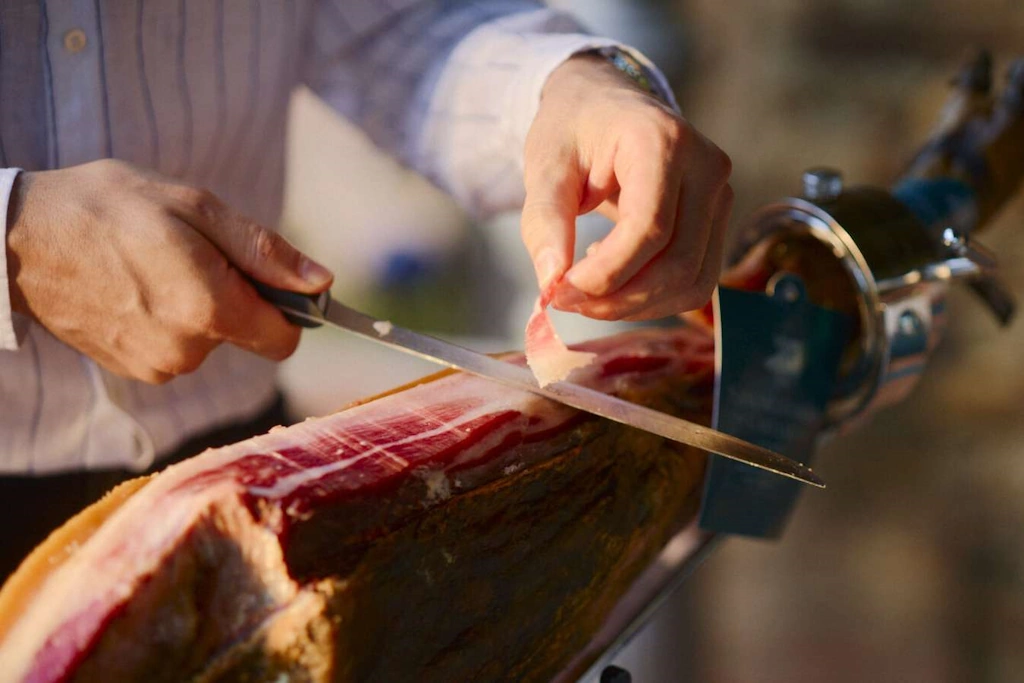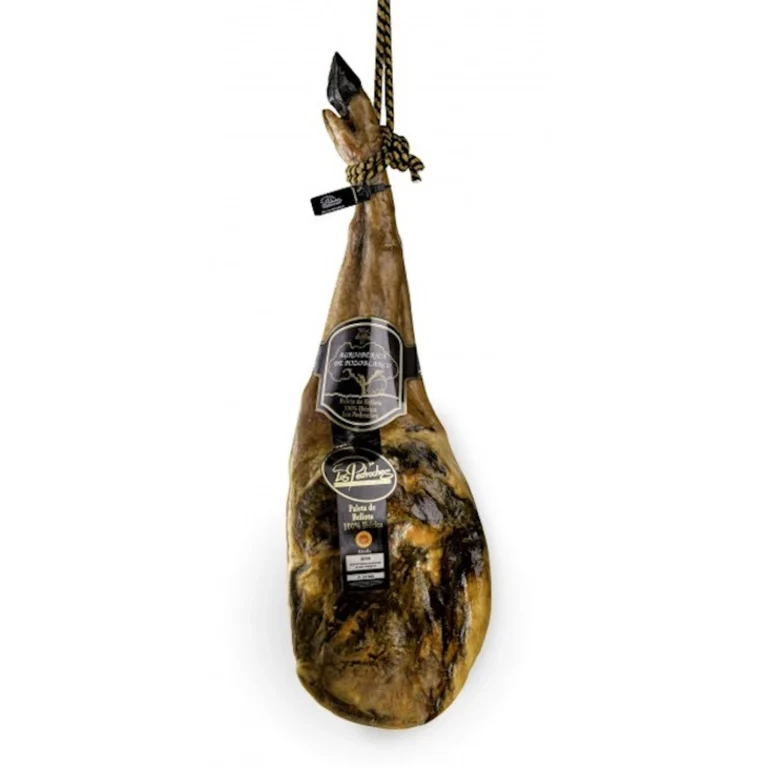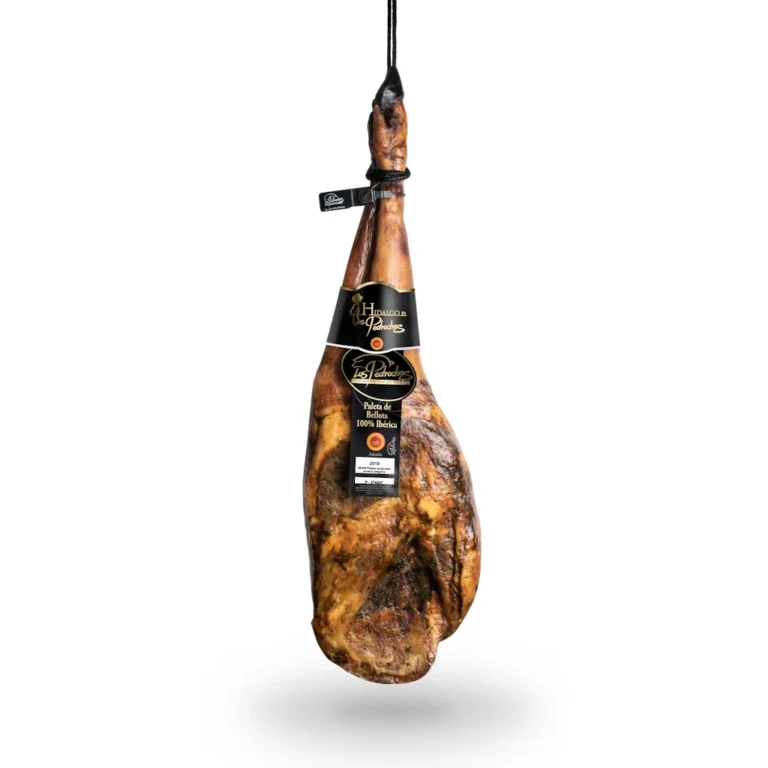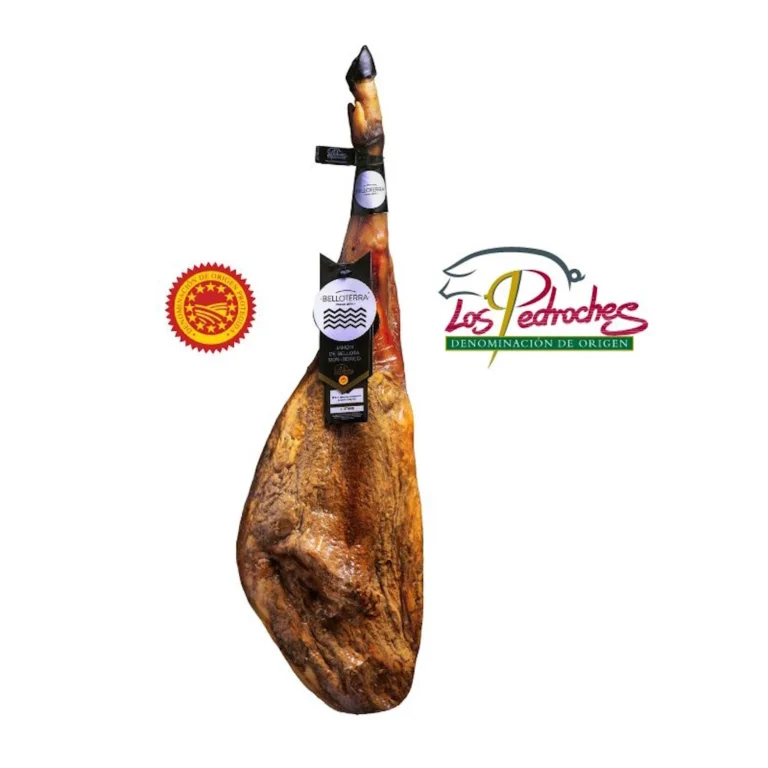The tasting of Iberian ham
- Aroma and Flavor
Indice

The Art and Science of Iberian Ham Tasting
Iberian ham tasting is a complex and multifaceted process, crucial to assessing its excellence, as evidenced by high-level awards such as the one granted by the Ministry of Agriculture. This meticulous examination encompasses several stages, combining sensory perception with specific technical criteria to determine the overall quality of the product.
The first phase of Iberian ham tasting focuses on the visual appearance. Here, experts evaluate characteristics such as exterior color, proportion and distribution of fat, and leanness when cut. These parameters are quantified using coefficients ranging from 1 to 10, providing an initial assessment of the presentation and marbling, indicative of proper fat infiltration and, therefore, potential juiciness.
Next, the olfactory-gustatory phase begins, considered the most important phase of tasting Iberian ham. At this point, the aromas emanating from the cut are analyzed, looking for characteristic notes of an acorn-fed ham, such as hints of acorn, nuts, vegetal aromas, leather, and well-integrated fat. A pleasant and balanced aroma is indicative of optimal curing. The “woody” aroma is especially valued, as it suggests a prolonged curing process in traditional drying rooms. Regarding the flavor, a harmonious combination of saltiness (provided by salt during maturation) and subtle sweetness is sought, which can manifest itself with hints of caramel or vanilla, the result of the infiltrated fat that confers softness and smoothness.
Finally, the Iberian ham tasting concludes with an evaluation of the texture. The goal is a firm yet juicy texture with a good mouthfeel, resulting in a pleasant and long-lasting sensory experience. The sum of all these assessments (approximately 10 to 12 parameters) determines the final score that establishes a ham as the best in its category.
This holistic approach to Iberian ham tasting ensures that products that truly represent the pinnacle of quality in this iconic Spanish delicatessen are recognized.
How to identify if a ham is quality?
Below is a technical summary of the criteria for selecting high-quality Iberian ham, based on the experience of Víctor Sanchego, founder of Mundibérico.
Technical Analysis of the Quality of Iberian Ham
Identifying a superior quality Iberian ham goes beyond mere tasting, based on an analysis of physical parameters that reveal both its curing process and the animal’s rearing style. According to expert Víctor Sanchego, three main indicators stand out for evaluating the excellence of this product.
The first indicator is the presence of tyrosine crystals. Tyrosine, a hydrophilic amino acid, crystallizes during slow and prolonged curing processes, acting as a biomarker of maturation that is not artificially accelerated. Its superficial appearance in muscle tissue indicates natural and progressive proteolysis, resulting in a more complex and desirable texture and flavor. Its absence may suggest curing in controlled chambers that alter the kinetics of the process.
A second evaluation criterion is the morphology of the hoof and claw. Sanchego maintains that a narrow, stylized hoof is a distinctive feature of Iberian breed purity. Additionally, the degree of hoof wear is a direct indicator of the pig’s physical activity level. A visibly eroded hoof suggests that the animal has traveled considerable distances, implying free-range or pasture rearing, where the pig feeds on acorns and natural resources. This type of rearing not only improves animal welfare but also positively influences fat quality and intramuscular infiltration.
Finally, the composition and texture of subcutaneous fat are a critical parameter. The fat in a high-quality ham should be transparent and shiny. The Sanchego test, which involves pressing the fat with a finger, assesses its melting point: if the fat yields easily, it indicates a high oleic acid content, characteristic of an acorn-based diet. This monounsaturated fatty acid profile not only improves fat fluidity at room temperature, but also contributes to a more delicate flavor and a creamy mouthfeel.
Nota importante: aceitedelcampo.com promueve el consumo del aceite de oliva virgen extra por sus cualidades culinarias y beneficios para la salud. No obstante, no debe sustituirse ningún medicamento o tratamiento actual sin la orientación de un profesional de la salud.
Productos que te pueden interesar
16,50 € – 320,00 €Price range: 16,50 € through 320,00 €
140,00 € – 156,00 €Price range: 140,00 € through 156,00 €
18,50 € – 470,00 €Price range: 18,50 € through 470,00 €



